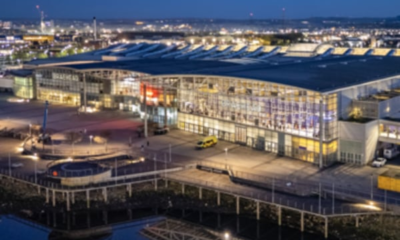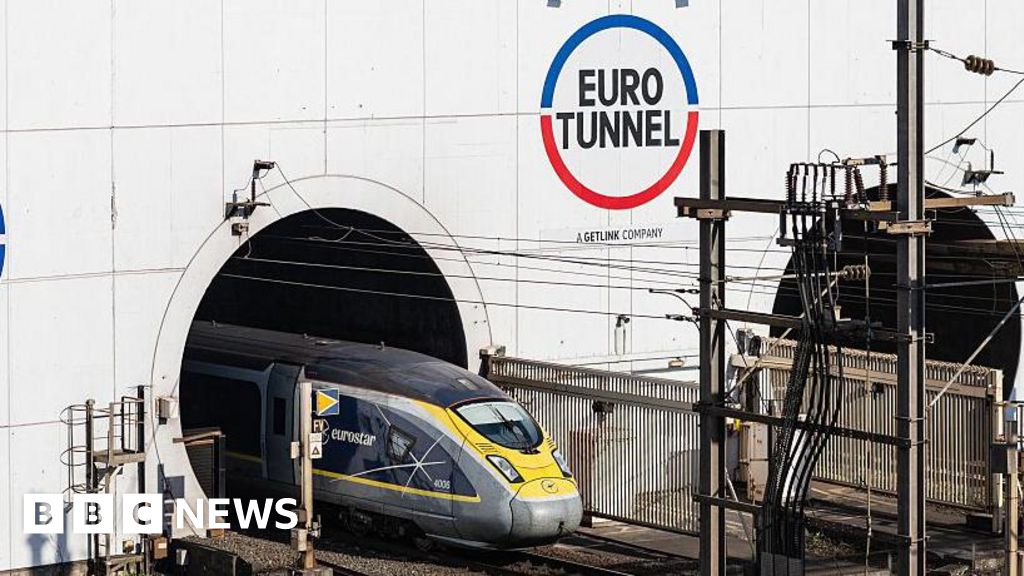Fashion
Billionaire family turns India’s gold obsession into a fortune

By
Bloomberg
Published
November 20, 2025
Gold is having a moment in the sun and the billionaire Muthoot clan of India is reaping the benefits.
Their family-run firm that’s doled out gold loans for almost nine decades is on a roll as consumers take advantage of surging bullion prices to swap jewellery for short-term cash. The boom has pushed the company’s stock to a record, boosting the Muthoots’ combined fortune above $13 billion, according to the Bloomberg Billionaires Index.
“The market is exploding,” said George Alexander Muthoot, 70, the managing director of his eponymous firm and third-generation executive of the business. “Even for rich people, it’s fashionable today to take gold loans.”
Muthoot Finance Ltd.’s rise speaks to the growing clout of India’s shadow banking sector, which is helping fuel the country’s economic growth. Gold lending across all firms surged 35% in the 12 months ended in June to 13.4 trillion rupees ($151 billion), by far the fastest growth among consumer loans, according to CRIF High Mark Credit Information Services Pvt.
The company’s biggest challenge now is keeping rivals at bay, with gold hovering near a record high. Competition is heating up after Bain Capital agreed to pay about $500 million for an 18% stake in gold lender Manappuram Finance Ltd. Mitsubishi UFJ Financial Group Inc. meanwhile is reportedly in talks to buy 20% of shadow bank Shriram Finance Ltd. for $2.6 billion. Muthoot Finance’s plan to expand its 7,500-plus network of branches by up to 200 a year may not be enough to maintain its dominance as India’s top gold lender.
During an earnings call last week, analysts peppered Muthoot with questions about how the firm is going to deal with foreign competitors, as well as the local banks that are aggressively expanding their gold-loan portfolios. He shrugged off the queries, saying the overall market is expanding.
“There is no need to take any hasty or knee-jerk reactions,” said Muthoot. “The challenges in the operations will catch up with them.”
No country is as obsessed with gold as India, where households own about 34,600 tons, worth about $3.8 trillion, according to Morgan Stanley estimates. That’s more than the holdings at the central banks of the US, Germany, Italy, France, Russia, and China combined. For India’s population of 1.4 billion, that works out to almost 25 grams per person, valued at more than $3,250 at current prices. (By contrast, the country’s gross domestic product per capita is just $2,820, according to the IMF.)
Gold is deeply ingrained in India’s culture, often linked to Hindu religious rites. Dhanteras, celebrated at the start of the Diwali festival of lights, is a popular day to buy gold and worship Lakshmi, the goddess of wealth. Weddings are also ripe for purchases, with brides typically lavished in gold bangles, bracelets, rings and necklaces.
The practice of using gold as collateral for loans dates back centuries. Long before the Muthoots set up shop, small jewellers would offer cash to help clients get through rough patches. The size of the loan — sometimes as little as $17 — is tied to the jewellery’s worth. Higher gold prices boost their value, which leads to bigger loans — and more interest income for lenders like Muthoot Finance.
“It’s much easier to borrow from Muthoot,” said Sandarsh, a 27-year-old driver in Bengaluru who asked to be identified only by his first name. He took out a loan of about 500,000 rupees in 2023, using half of his family’s gold stash. He was charged 1.25% a month, cheaper than the rate offered by State Bank of India, he said. He used the money to invest in a biryani business, which ultimately failed, though he repaid the loan.
The Muthoot clan are Orthodox Christians, a tiny minority in the predominantly Hindu nation. The family’s given names are usually English, and George is particularly popular. Nine of the 15 company directors are named George. Muthoot and his brothers are the 19th generation of the family line.
Their business model is surprisingly simple. Clients bring their jewellery to a branch, where staff check the gold content before making a loan of up to 75% of the value. A minimum of 18-karat gold is required. To gauge purity, staffers rub the piece against an obsidian testing stone — called a Kasauti — to create a faint streak, before adding a nitric acid solution. If the line disappears, it may signal a fake, or low-quality gold. Borrowers typically take out loans for four to 12 months, before reclaiming their heirlooms after repaying the money. Muthoot Finance charges 1% to 1.5% a month on the loans. Annualised rates can top 19%.
“We only finance used jewellery,” Muthoot said in an interview from his office in Kochi, the commercial hub of Kerala state at the southern tip of India. “Most of the gold is owned by the family. When they give it as collateral, they’d like to take it back.”
Muthoot Finance branches are hardly ornate, considering the value of the assets inside. They tend to be in low-income neighbourhoods that are often shunned by major banks.
One branch in the financial hub of Mumbai is tucked away on a quiet side street behind a busy thoroughfare. A hardware store and mom-and-pop grocery shop sits next door, where hawkers selling custard apple and papaya park their carts.
The outlet is protected by a sliding metal grille, like an old-fashioned elevator door. Its facade is adorned with the bank’s logo of two elephants facing each other, their curled trunks forming an “M” for Muthoot. Along the wall are bright red posters of actor Amitabh Bachchan, a brand ambassador and one of India’s biggest Bollywood stars, cupping his hands in a traditional namaste greeting.
A security guard, cooled from the searing heat by a fan duct-taped to a small stool, locks the door with a heavy padlock whenever a customer enters. After clients are scanned with a hand-held metal detector, they’re served by staff from behind glass partitions.
Once the jewellery is deposited, it’s stored in the branch’s vault, whose doors are controlled from the company’s head office. The entire process takes less than an hour, and no credit history is required. The tight security is essential: Muthoot Finance held 209 metric tons of gold for clients — worth almost $28 billion — slightly more than the gold held in Singapore’s official foreign reserves.
Outstanding gold loans by the Keralite firm rose to 1.25 trillion rupees at the end of September, topping the 725.5 billion rupees in similar loans made by State Bank of India, the country’s largest lender. Still, SBI’s gold loan book jumped 87% from the previous year, faster than Muthoot Finance’s 45% growth rate.
While Muthoot Finance has dominated the business of gold financing, the company could do more to sell other products to diversify its revenue, said Parijat Garg, a Mumbai-based credit consultant who has tracked the company for a decade. Gold loans account for close to 90% of the group’s business, which also includes home financing and insurance.
“If I’m a gold loan customer, I may have insurance needs, I may have remittance needs,” Garg said.
Though the firm’s customers often have low incomes, defaults are rare. Muthoot’s non-performing loan rate of 2.3% is in line with commercial banks, which are subject to stricter regulations. Jewellery seized from any default is sold at auction.
The steady growth has led to three straight years of stock gains for the company, including a 73% rally this year. As a result, four family members have more than doubled their fortunes. Three of them each hold at least 10% of the firm, which now has a market value of almost $17 billion.
The clan is already grooming the next generation, according to Muthoot. Asked whether female family members can one day run the business, he said it’s a “sensitive” matter. “They get married, they go to the husband’s family,” he said.
Among his three deputies are George Muthoot Jacob, a 42-year-old nephew who holds law and business degrees from England.
Asked why he returned home instead of staying in the UK like so many other well-heeled Indians, the younger Muthoot seemed surprised by the question. “We have a great family business here,” he said.
Fashion
Kashmir Box evolves into ‘House of Brands,’ eyes global retail expansion

Published
November 20, 2025
Kashmiri heritage fashion and lifestyle retailer Kashmir Box has announced a shift in its business strategy and will evolve into a global ‘House of Brands,’ fuelled by an investment round and FDI (Foreign Direct Investment).
“Our expansion is not just about geography; it is about value creation,” said Kashmir Box’s co-founder and CEO Moheet Mehraj in a press release. “The gradual transition to a House of Brands began in 2019. We are building deeper equity in specific categories. We have proven that an impact-driven model can be financially robust, achieving 4x growth while staying profitable. With the influx of this strategic funding, we are now ready to take this blueprint to the world.”
The business will put its recent investment funds towards expanding its physical retail footprint across the world to connect global shoppers with Kashmiri heritage. In its House of Brands model, Kashmir Box will serve as a parent entity and manage a curated portfolio of brands which celebrate Kashmir’s cultural and aesthetic traditions.
The business will pursue strategic online and offline retail partnerships in India and the Middle East before foraying into new international markets. A flagship store in Delhi NCR is set to launch soon and Kashmir Box plans to open first international retail boutique in the UAE by June, 2026.
“Kashmir Box is proving that heritage, when paired with innovation and design excellence, can fuel a global luxury movement,” said BeyondSeed’s co-founder and CEO Kuldeep Mirani. “Their House of Brands model unlocks unprecedented value for artisans and consumers alike, and BeyondSeed is proud to support this next phase of global expansion.”
Copyright © 2025 FashionNetwork.com All rights reserved.
Fashion
India’s Page Industries sees steady Q2 growth despite soft margins

In the first half (H1) of fiscal 2026 (FY26), the company’s performance was stronger. Revenue grew 3.3 per cent to ₹26,704 million, and sales volumes increased 2.23 per cent to 115.2 million pieces. EBITDA rose 9.4 per cent to ₹5,742 million, and PAT expanded 9.7 per cent to ₹3,956 million, reflecting healthier profitability.
Page Industries has posted modest Q2 FY26 growth, with revenue up 3.6 per cent to ₹12,909 million (~$145.5 million) and sales volumes rising 2.5 per cent, though EBITDA and PAT saw slight declines.
H1 performance was stronger, with revenue up 3.3 per cent and healthier margins.
The company expects consumption to improve with GST 2.0, lower lending rates, and e-commerce growth.
The company noted that expected improvements in consumption—driven by GST 2.0, lower lending rates, rapid e-commerce expansion, and strengthening quick-commerce channels in metros and other cities—are likely to support future growth. The company added that it maintains a leading position in modern retail, and early consumer response to its new bonded-tech product line has been promising, Page Industries said in a press release.
“Our continued focus on operational efficiency and cost optimisation measures while investing in product innovation and distribution expansion has contributed to strong operating margins. While revenue growth was moderate this quarter, we are well positioned to capitalise on the improvement in demand in the coming months,” said VS Ganesh, managing director, Page Industries Limited.
Fibre2Fashion News Desk (SG)
Fashion
Frasers Group buys Glasgow’s Braehead mall as its acquisition spree continues

Published
November 20, 2025
It’s rare that a month goes by without news of Frasers Group buying another business and the latest announcement came on Thursday with the acquisition-hungry retail giant buying Braehead Shopping Centre.
It’s just a month since the group bough a majority stake in American luxury retailer The Webster and three months since it revealed it now had a stake in leisure specialist We Do Play.
But as well as buying such businesses it’s also been increasing its ownership of malls and retail parks. So why Braehead in particular?
Well, the Glasgow destination is Scotland’s largest retail and leisure destination with annual footfall of over 15 million visitors and totalling over 1 million square feet.
The company said the acquisition reinforces its “commitment to investing in high-potential retail destinations. Property acquisitions such as this one play a key role in Frasers Group’s Elevation Strategy, adding Braehead — which serves the UK’s largest retail spend catchment outside of London — to a strong and growing property portfolio across the UK”.
A few months ago, former owner SGS said Braehead had attracted a record number of visitors in the year ending June, with a year-on-year increase in footfall and spend by 4% and 3%, respectively, “outperforming regional and industry benchmark figures”.
And its tenants had committed to investing £10 million in their stores over the course of 2025 up to that point, “driven by demand from both new entrants and reinvestment from existing brands”, with 16 tenants renewing or extending leases so far in 2025.
CEO Michael Murray added on Thursday that the purchase “cements the group’s position as a leading operator and champion of physical retail destinations while unlocking greater opportunities to serve communities with the best brands, environments and experiences possible”.
Claire Barber, CEO of SGS UK Retail, also said: “The sale of Braehead was always part of our strategic plan and through active management, we have delivered substantial value enhancement and successfully stabilised the asset, attracting new brands and increasing its relevance and appeal to customers. We have created a strong platform from which Frasers Group can continue to drive growth, leveraging its retail expertise to further unlock Braehead’s potential as one of the leading retail destinations in Scotland.
“In light of strong leasing performance and the significant progress made in discussions with brands, we continue to see significant value creation opportunities in the group’s remaining three assets.”
Those assets are Lakeside Shopping Centre in Essex, Victoria Centre in Nottingham and Harlequin Watford.
Braehead had been owned by SGS since it took it over after the collapse of Intu Properties in 2020. There have been rumours for a while that it wanted to sell the centre (as well as rumours that Frasers has also been eyeing a big stake in Manchester’s Arndale mall).
While the purchase price wasn’t disclosed, the company certainly has enough cash to make big-league acquisitions. Back in July it announced new funding facilities that gave it access to borrowings of up to an aggregate amount of £3 billion.
Braehead isn’t the first Scottish shopping destination Frasers has acquired. It also bought Overgate Dundee back in 2023 and has invested heavily in it since then.
It has bought others across the UK too. Just over a year ago it confirmed full ownership of the 600,000 sq ft Princessshay Shopping Centre in Exeter, the 350,000 sq ft Fremlin Shopping Centre in Maidstone, Kent, and the 65,000 sq ft Olympus Centre retail park in Quedgeley, Gloucester.
That was just a month after it bought the St Nicholas Arcade (St Nics), the 160,000 sq ft shopping centre in Lancaster. It has also taken on Doncaster’s Frenchgate shopping centre, The Mall in Luton and Junction 32 on the outskirts of Leeds.
Copyright © 2025 FashionNetwork.com All rights reserved.
-

 Tech5 days ago
Tech5 days agoNew carbon capture method uses water and pressure to remove CO₂ from emissions at half current costs
-

 Politics7 days ago
Politics7 days agoBritish-Pakistani honoured for transforming UK halal meat industry
-

 Business5 days ago
Business5 days agoThese 9 Common Money Mistakes Are Eating Your Income
-

 Sports5 days ago
Sports5 days agoTexas A&M officer scolds South Carolina wide receiver after touchdown; department speaks out
-

 Sports6 days ago
Sports6 days agoApple scrapping MLS Season Pass service in ’26
-

 Business6 days ago
Business6 days agoWhat’s behind Rachel Reeves’s hokey cokey on income tax rises?
-

 Tech7 days ago
Tech7 days ago$25 Off Exclusive Blue Apron Coupon for November 2025
-

 Fashion6 days ago
Fashion6 days agoAfter London, Leeds and Newcastle, next stop Glasgow for busy Omnes

















